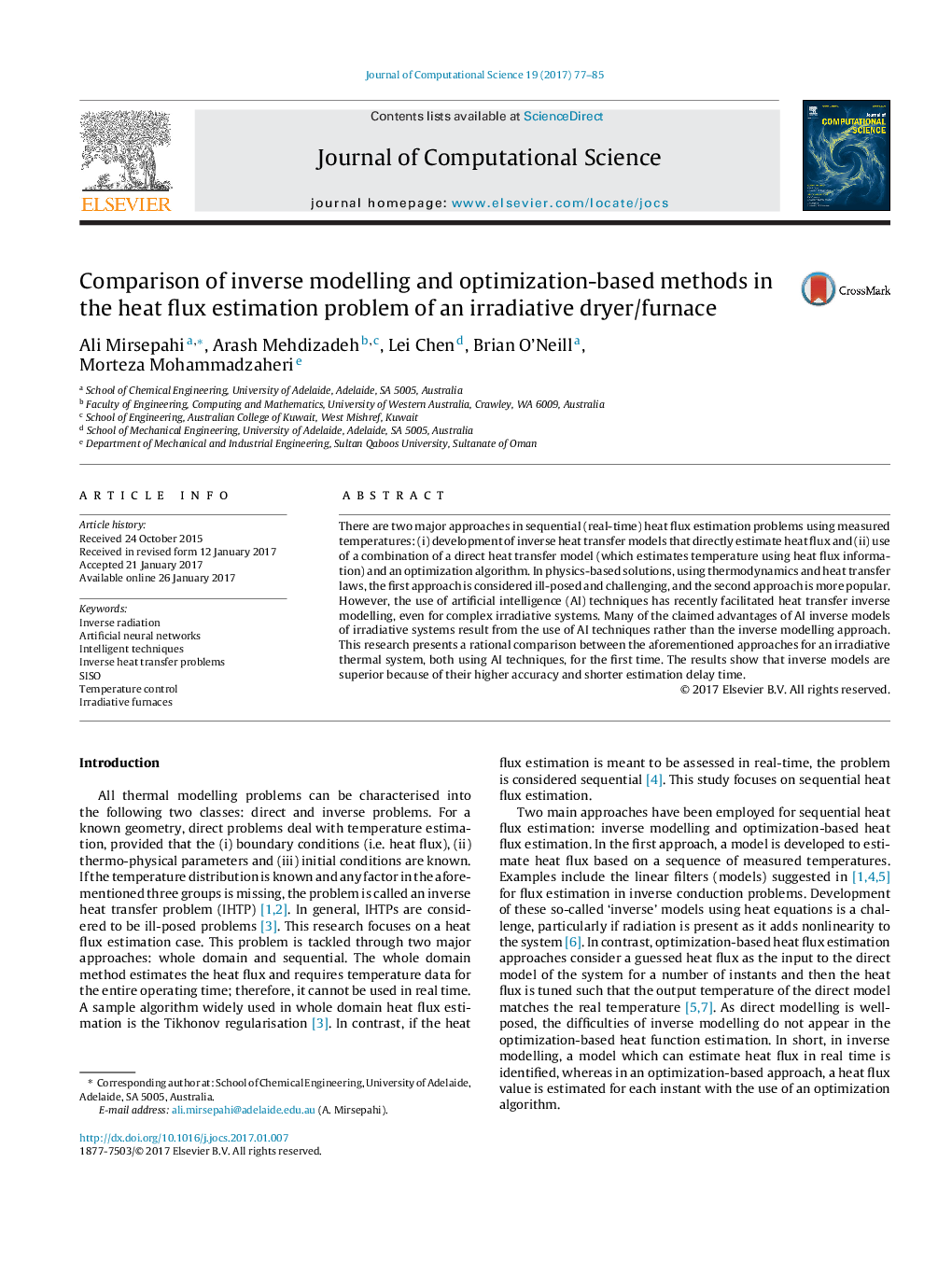| Article ID | Journal | Published Year | Pages | File Type |
|---|---|---|---|---|
| 4951068 | Journal of Computational Science | 2017 | 9 Pages |
Abstract
There are two major approaches in sequential (real-time) heat flux estimation problems using measured temperatures: (i) development of inverse heat transfer models that directly estimate heat flux and (ii) use of a combination of a direct heat transfer model (which estimates temperature using heat flux information) and an optimization algorithm. In physics-based solutions, using thermodynamics and heat transfer laws, the first approach is considered ill-posed and challenging, and the second approach is more popular. However, the use of artificial intelligence (AI) techniques has recently facilitated heat transfer inverse modelling, even for complex irradiative systems. Many of the claimed advantages of AI inverse models of irradiative systems result from the use of AI techniques rather than the inverse modelling approach. This research presents a rational comparison between the aforementioned approaches for an irradiative thermal system, both using AI techniques, for the first time. The results show that inverse models are superior because of their higher accuracy and shorter estimation delay time.
Related Topics
Physical Sciences and Engineering
Computer Science
Computational Theory and Mathematics
Authors
Ali Mirsepahi, Arash Mehdizadeh, Lei Chen, Brian O'Neill, Morteza Mohammadzaheri,
